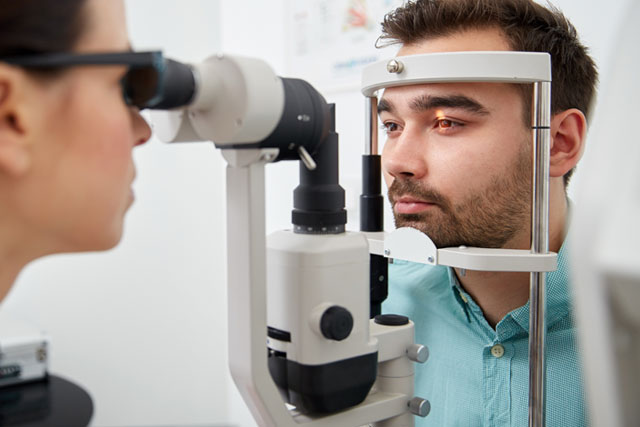Posted by: Eye Specialists of Mid Florida in Blog

Whenever I tell a patient that he or she has cataracts you can see an expression of disbelief. The patient immediately is concerned and asks if he or she needs to have cataract surgery.
Today I want to talk about cataracts and when cataract surgery is indicated. First of all, what is a cataract? When you look at someone, you see the person’s eyes which are embedded in the bony eye socket and it is cushioned with fat. The eye is a hollow globe structure and inside this globe is a small lens. This lens is about the size of your camera lens on your cell phone. If I am looking at a one year old baby, this internal lens is crystal clear. In fact, it is so clear you can barely see it! I bring this same child back when he or she is ten years old and this lens is not crystal clear anymore. It has a milky color to it. If I bring this child back when he or she is twenty years old, this lens is a little cloudier. Thirty years old, it is cloudier. Forty years old it is cloudier. Fifty, Sixty, Seventy, Eighty, Ninety, One Hundred, etc., it is cloudier! This cloudy process happens to everyone, like gray hair. When do I call this cloudiness a cataract? The ten year old child I examine I do not say he or she has a cataract even though their lens is not as clear as it was when they were one year old. I call the cloudy lens a cataract whenever the patient cannot read the 20/20 line with the best pair of glasses, or with the best glasses the patient’s vision is 20/20 but under glare conditions the vision is decreased, and the retina, vitreous and optic nerves are disease free. We start thinking about cataract surgery whenever the patient’s quality of life is affected. I will hear complaints such as “I cannot read the road signs” with the best glasses prescription or “I cannot read the writing on the television screen“, or “I cannot read the small print”. If I cannot make the glasses prescription better, then we start to think about cataract surgery. The other complaint that drives cataract surgery even more is glare at night time caused by oncoming headlights or rainy nights. When your internal lens is cloudy, it is like looking thru a dirty windshield on your car. If you get up in the morning and drive away from the sun, you look through a dirty windshield without any problems. But if you turn the car around and head into the sun, then you have a difficult time seeing what’s ahead because of glare. Light from the sun hits the dirt on the windshield and scatters the light causing glare problems. Clean the dirt off the windshield, no more scattering, no glare, and you can see thru the windshield.
I often hear from patients “I thought you did cataract surgery when it was ripe”. Cataracts are not tomatoes, they do not get ripe. This expression came about when Medicare used the criteria of 20/50. If, with the best glasses, your corrected vision was worse than 20/50, then the cataract was “ripe” and Medicare would pay 80% of the cataract procedure. We have learned that using 20/50 as the criteria for cataract surgery is not adequate. Glare from the cataract is a more debilitating problem. You can have a person who can read the 20/20 Snellen line, but under glare conditions this person’s vision drops to 20/80 or worse!
I explain this to my patients and they understand that the doctor is not the person who decides when to do cataract surgery, the patient does. When I examine my patients on a yearly basis, I am listening for complaints. If the patient is happy with his or her vision and is functioning well visually, we schedule a follow-up appointment in one year. If the patient becomes symptomatic before this one year appointment, my patients know to schedule an appointment sooner. Chances are, the cataract is ripe!
